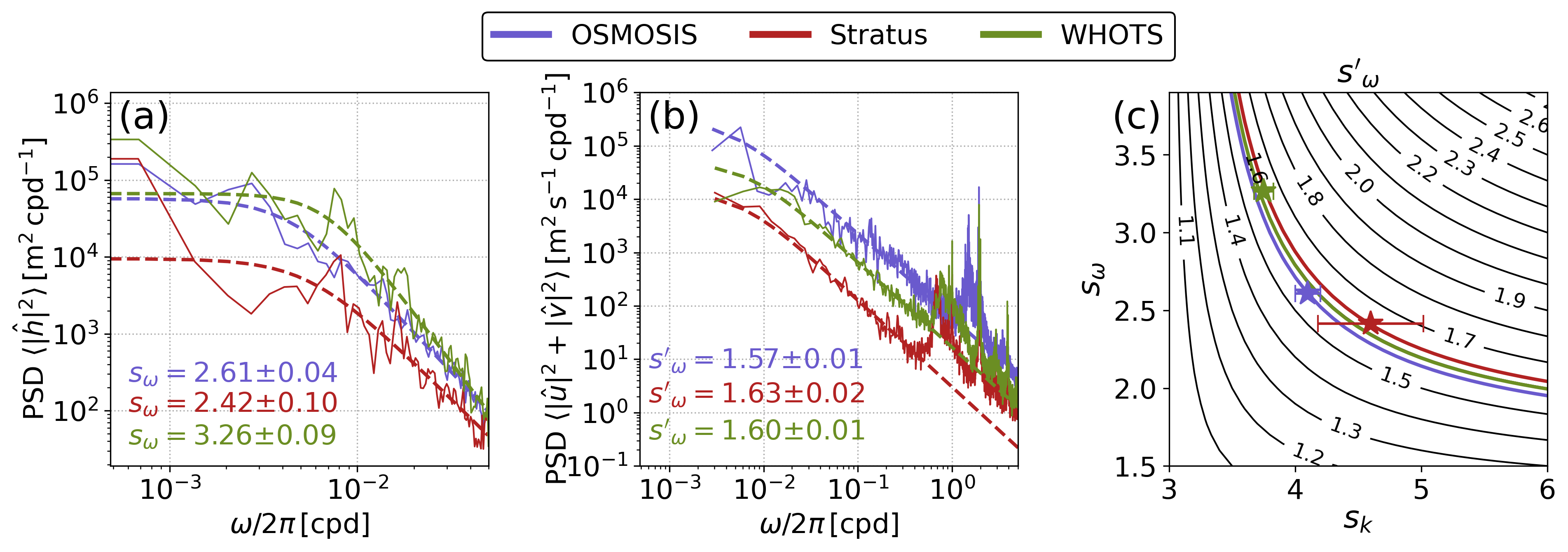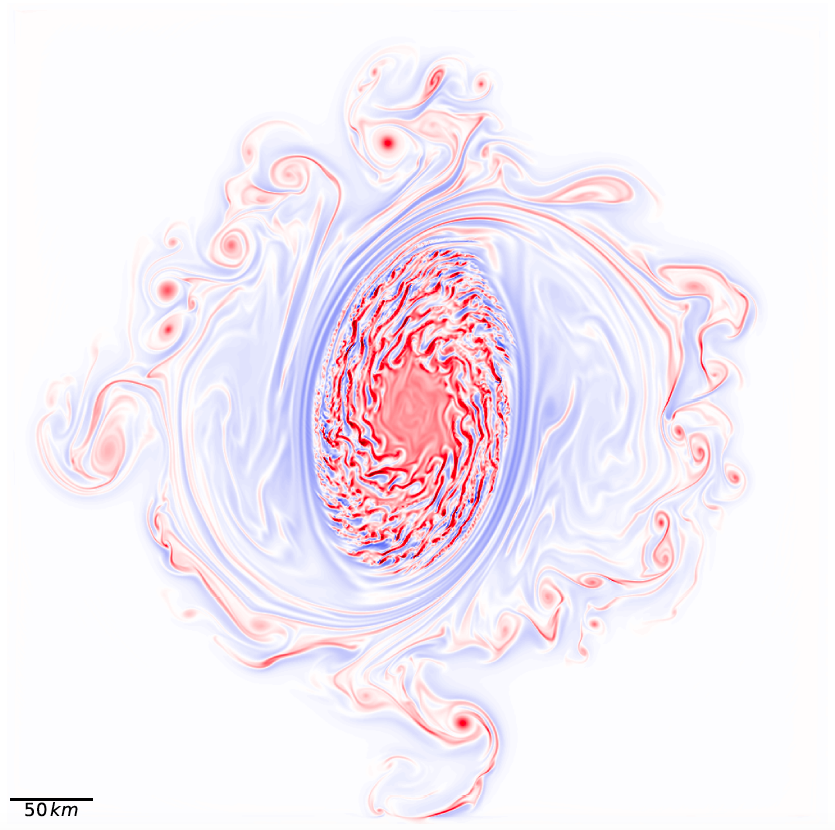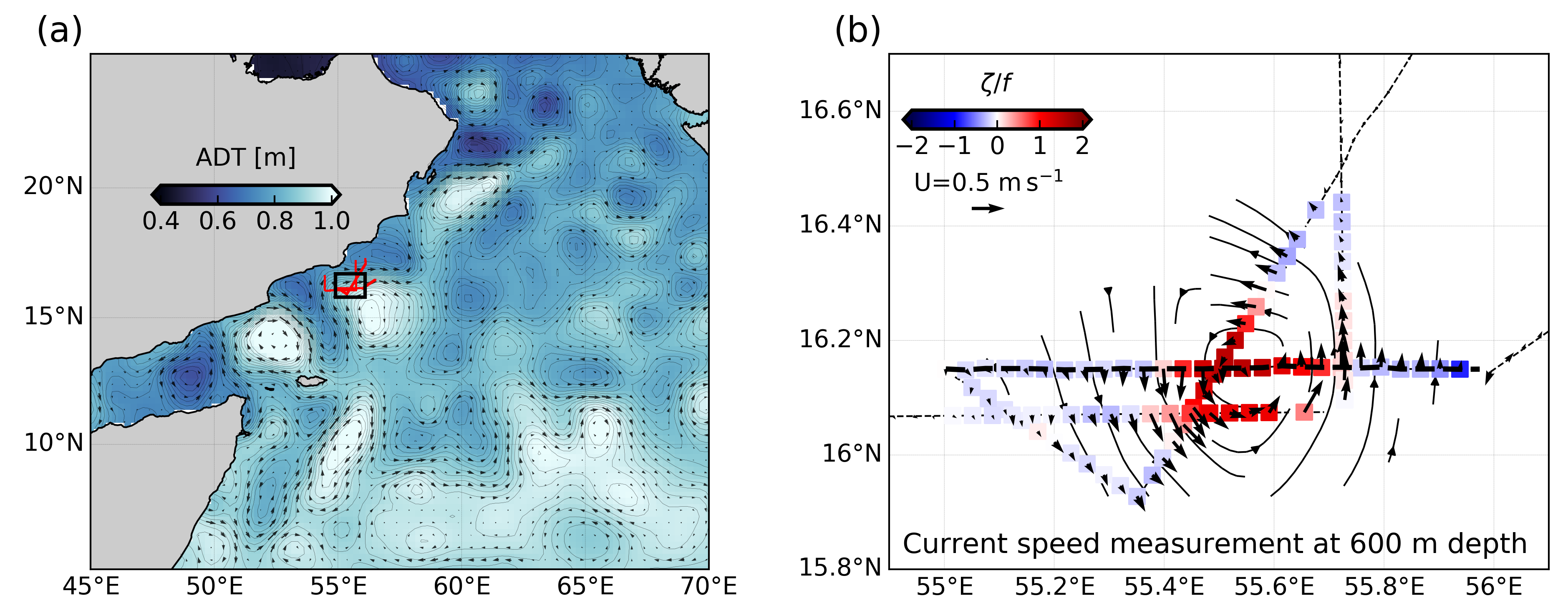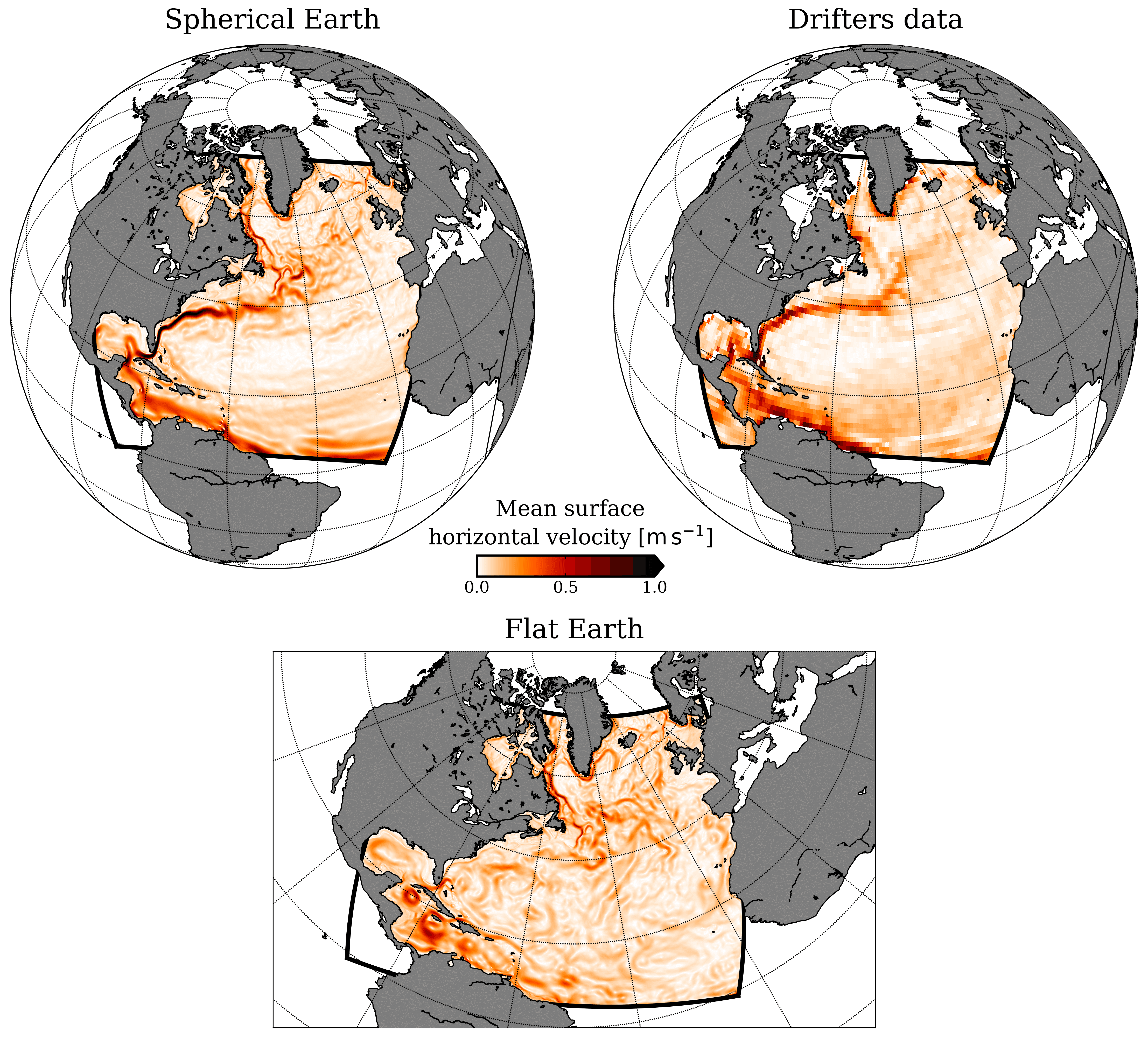Welcome to my homepage
I am a postdoc at the University of Iceland, working on the understanding and characterization of oceanic structures in the Icelandic Basin. This work is done under a Queen Margrethe’s and Vigdís Finnbogadóttir's fellowship in collaboration with Angel Ruiz-Angulo.
Oceanic circulation South of Iceland
Water masses formed in the Arctic Ocean overflow into the North Atlantic at the bottom of the ocean, forming the so-called upper cell of the Atlantic Meridional Overturning Circulation (AMOC). The pathway of the currents carrying these water masses is still under debate due to a lack of observations. In particular, while it is the crossroad of this global circulation, the region south of Iceland has been poorly studied in details and there is no consensus on the shape and intensity of bottom currents carrying water from Nordic Seas to the North Atlantic. During my current postoctoral position at University of Iceland, I study the oceanic ciruclation in this area, in collaboration with Angel Ruiz-Angulo, using a combination of numerical simulations, in situ data, and remote sensing data.
One of the first result of our project is that we found that a steady current flows along the Icelandic continental shelf at about 1000 m depth. When flowing over the rough topography, this bottom current generates a 200 m large bottom mixed layer, and it generates many submesoscale structures (SCVs) at the southernmost tip of the Icelandic shelf. These latter subsequently spread water masses in the Iceland Basin.
The dense water carried by this bottom current has enormous importance as it significantly contributes to the lower limb of the AMOC. Moreover, the winter convection there can create surface mixed layer depths over 700 m, which in some regions allows the exchange of surface waters with dense bottom waters. The upper ocean in this region is warming up and IPCC projections suggest this will continue at even higher rates than other basins. South of Iceland, the combination of deep mixed layers with warmer surface waters, and thick bottom boundary currents with cold-dense waters may exchange this excess of heat resulting in changes of these dense waters in a warming climate. Furthermore, this bottom boundary current appears to be a key phenomenon to sustain biological activity in the area. Indeed, the distribution of several Cold Water Coral species strongly coincides with the position of the bottom current.
Study of surface oceanic turbulence
We know that oceanic currents with horizontal scales smaller than 100 km are a major part of the oceanic circulation. For now, we do not have a global characterization of these flows and their impact because of the crude resolution of satellite altimetry. The Surface Water and Ocean Topography (SWOT) mission, launched in late 2022, is expected to lower the noise floor and thus allow to characterize finner scales. However, the sea surface height field at these fine scales is expected to be a combination of geostrophic (balanced) turbulence and internal gravity waves.
During a NASA-funded postdoc at California Institute of Technology, in the ocean physics group led by Jörn Callies, I worked in the understanding of the balanced turbulence, to allow to better disentangle signals when the satellites fly over the ocean, and I especially focused on the study of the spectral content of Sea Surface Height. This work was done in collaboration with people from Jet Propulsion Laboratory and SCRIPPS Institution of Oceanography.

I first used a combination of in situ and remotely sensed observations to constrain the imprint of submesoscale turbulence in the sea surface height (SSH) field. The distribution of SSH variance across frequencies and wavenumbers was estimated by comparing an empirical model spectrum to two sets of observations. First, submesoscale SSH variance is constrained using a pair of GPS buoys spaced at about 10 km. Second, a combination of moored current meters and nadir altimetry is used to obtain an independent constraint. In all four locations studied, spanning the mid-latitude and subtropical ocean, these constraints indicate that the wavenumber spectral roll-off of submesoscale SSH variance is between about -4 and -5. These estimates are consistent with previous observations, model results, and theoretical predictions. They provide for a strong prior for the interpretation of upcoming high-resolution satellite data.
Despite this, and despite the amount of data sampled by current and upcoming satellite missions, the shape of the frequency spectra that we measure is for now poorly understood. We thus then use satellite measurements of sea surface height timeseries, combined with global oceanic re-analysis and idealized numerical simulations to study the properties of the frequency spectrum for oceanic turbulence. In particular we showed that the meridional gradient of Potential Vorticity, as well as the barotropic current are the main parameters that shape the frequency spectrum of sea surface height as observed by satellite altimetry. In particular, a simple linear scaling exists and allows to retrieve the vertical gradient of potential vorticity value from frequency spectra analysis.
Vortices in the Arabian Sea
During my PhD, I studied the dynamics of meso- and submeso-scale coherent structures in the Arabian Sea. This work was supervised by Xavier Carton and Thomas Meunier, in strong collaboration with Pierre L'Hégaret and Mathieu Morvan. It took place at LOPS in Brest thanks to DGA's funding.

In the Arabian Sea, vortices of horizontal size between 10 and 100 km have a greater impact on the circulation than the large-scale circulation. In this work, I studied the three-dimensional structure of mesoscale eddies in the Arabian Sea, through the joint use of altimetry and in situ measurements. I described the lifecycle of these eddies using numerical simulations, under the assumption that they are isolated from the rest of the dynamics. For these simulations, a composite vortex extracted from in situ data is used as an initial condition. The vortex stability was shown to be determinent for the vortex lifetime and the generation of submesoscale structures at the surface.

During this thesis, I also studied the interaction between eddies and the western boundaries of ocean basins, and relate these results to the measurement of a cyclonic submesoscale vortex performed during the Physindien 2019 experiment. This latter was the first deep cyclonic submesoscale vortex measured at such a resolution. Finally, I studied one part of the eddy interactions that occur in the Arabian Sea: mergers. One of the main results was that the comparison between the distance for which two eddies in the ocean merge, and the critical merging distance obtained from idealized studies of two eddies isolated on an f-plane omits the main parameters involved in merging: the ambient turbulent field and the β-effect.
Beside the focus made on the Arabian Sea for this PhD Thesis work, my general interest in oceanography is related to these structures, vortices, because we know that they play a major role in the global ocean dynamics. I tried to relate problematics to the study of vortices in an idealized way, as it allows to more finely describe the processes at play at scales of the order of 100 km.
Is the Earth flat btw?

